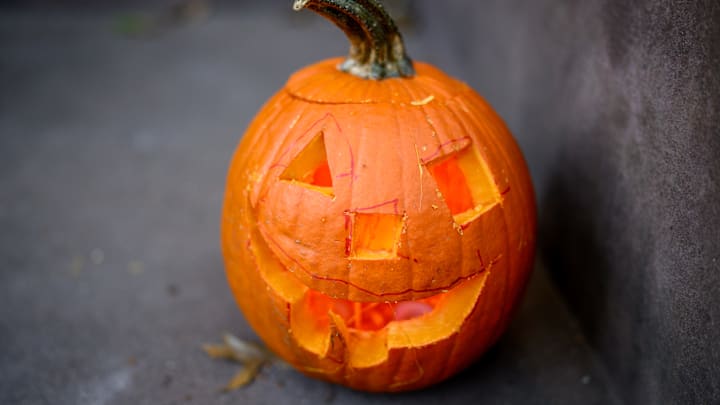Have you ever wondered why pumpkins are synonymous with Halloween? This wasn’t always the case, as old traditions began long before the North American fruit was used. So then, why do we decorate pumpkins for Halloween?
Just as languages change over the centuries, so do traditions and customs. But the spirit of those traditions remains. We don’t decorate pumpkins for the same reasons our ancestors did, but it still connects us to the celebrations of the past. Specifically, it connects us to the ancient Celtic holiday of Samhain.
Samhain

For the Celts of the early Middle Ages, Samhain (pronounced sow-win) was a celebration of the cycle of life and death. They believed that October 31 was the one night of the year when the veil between worlds was thinnest, and spirits could walk among the mortal realm. Vegetable lanterns, usually turnips but also potatoes or beets, were carved with eerie faces to ward off spirits looking for host bodies to possess.
The Catholic Church, hoping to convert more people, absorbed Samhain celebrations into the day before their All Saints Day, also called All Hallows’ Day, on November 1. Samhain became known as All Hallows’ Eve, though most of the celebrations, including the turnip lanterns, remained the same. And centuries later, when Irish immigrants came to America, the tradition of carving vegetable lanterns to ward off spirits spread across the nation.
Changing Tradition

While turnips were small and more difficult to carve, Irish immigrants found that the North American pumpkins were the perfect canvas for their All Hallows’ Eve tradition. They made the switch, and now, very few places, like the Isle of Man, still use turnips. But, throughout the years, even more changes have been made to the tradition than just the type of vegetable being carved. The method of decoration has also changed.
Some traditionalists might say that carving pumpkins is the only way to go because it is closest to the custom of creating lanterns. As time goes on, however, decorating pumpkins has become more about artistic expression. Painting and even sculpting pumpkins have grown in popularity for the same reason that we ditched the turnips: ease.
You May Also Like:
Add Mental Floss as a preferred news source!
Carving or Painting?

Many people cannot carve pumpkins due to the strength it takes. It’s also not safe for children to wield large knives to hack away at their pumpkins. There are limitations to what you can carve, if you don’t want to accidentally make one giant hole, that is. Painting and decorating pumpkins with paper and other crafts allows for more creativity and accessibility.
Whether carving or painting, the pumpkin has transformed into an art form. Some of the faces on the carved jack-o’-lanterns would certainly frighten any lingering spirits, but the majority of our modern pumpkins are decorated just for fun. It’s a way to show off your talent, or to simply try your best, but decorating pumpkins will remain a Halloween tradition for years to come.
And even if it is very different than what our ancestors did, continuing to decorate pumpkins still ties us back to those old customs.
